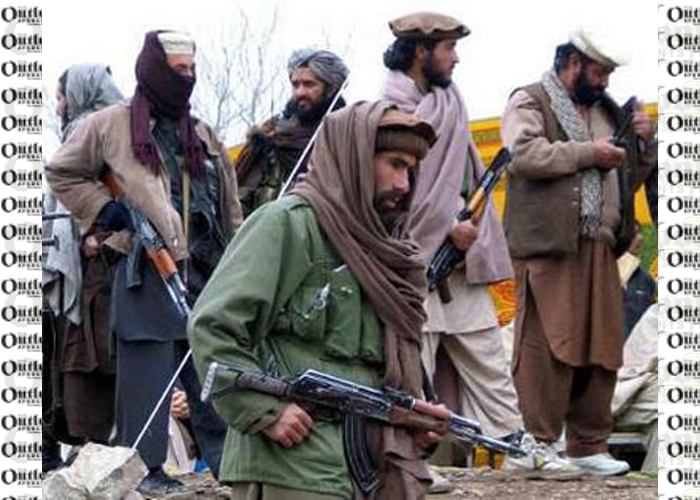The concept of conflict refers to a situation in which people, groups, or countries are involved in a serious disagreement or argument that may or may not lead to war and violence. Social science scholars believe that matter of conflict is a natural and inherent feature of social life. Even, some of the social science scholars insist that conflict paves the way for the advancement of human groups provided that is properly managed. That is if a group or individual are not faced with challenges, they are not impelled to struggle, think and make efforts to overcome the issues and as result, they will become inactive and unmoving without learning new skills and experience. For that reason, the phenomenon of conflict is a natural and inevitable issue, but the method of dealing with conflict which is called conflict management is vitally important.
Hence, the issue of conflict is not confined to Afghanistan but our weakness in conflict management has happened to be a chorionic phenomenon in the history of this country. That means, after more than forty years of active conflicts, and after more than one century of active or inactive conflicts, no one has scientifically proceeded to tackle the issue. The traditional way of dealing with conflict has widely been confined to using hard power in Afghanistan. Instead of analyzing the root factors of the conflicts, the political leaders of this country have temporally suppressed them, but after gaining the required chance those potential factors of conflict have been gradually revived in the country.
According to social science scholars, one of the most important steps in dealing with conflicts is identifying their root factors. The first scholars such as Plato and Aristotle put their fingers on three main potential factors as power, wealth, and social prestige which are now termed as scarce sources. Whatever these scarce resources factors get lesser in society; they, as potential factors of crisis, will get more active and destructive in creating conflict in a society. Likewise, whatsoever these resources are distributed unequally, the potential factors get more active and stronger in creating conflicts in a country. Therefore, the conflicts of Afghanistan are largely rooted in unequal distribution of power, wealth, and prestige at the national level. The governments need to ensure it equally represents the whole citizens of the countries and must note that no monopolistic system has yielded satisfactory outcomes in the world.
In other words, the most important factor of conflicts in Afghanistan is the lack of a national government. Even, some of the local political scholars believe that the national government has never been established in Afghanistan and that what we have had as a government throughout history have been tribal states while tribal states act in as an anti-government factor because supporters tribal states think modern values such as meritocracy, democracies, freedom and free and fair competition wind up their absolute advantages. In addition, the tribal states, as suffering from a legitimacy crisis, are unable to rationally solve the internal problem of Afghanistan and so resort to using hard power or foreign powers while most of them define their political strategy on the weakness of Afghanistan. Hence, we must understand this objective reality of this country and not continue the policy of elimination, monopoly, tribalism and not create more problems, crises, and catastrophes for ourselves.
The second factor behind the conflicts of Afghanistan is its geopolitical, geo-economical, and geostrategic location. This feature of Afghanistan has not only drawn the attention of regional power but also the attention of world power. After the end of the cold war, the theorists of new world order such as Huntington highlighted 8 areas of geopolitical location in the world including Afghanistan saying that whoever dominates on these areas they can dominate the entire world. The geo-strategic and geo-political position of Afghanistan in the new world order was defined in heart of central Asia, geopolitical location of China, South Asia, and the Middle East while geo-economically it was situated over the ancient Silk Route, South Asia, and presence in the middle of important neighboring countries. Therefore, dealing with the conflict in this brawling area will not be easy unless we get a united nation while adopting policies of good friends but bad enemies in the region.
The last factor behind the endless conflicts of Afghanistan is the negative role of extremism in fueling war and violence. The extremist groups are being trained in single-dimension educational centers largely similar to medieval seminaries seven centuries ago. They are trained in a way as if they reach to an ultimate truth that is un-debatable. On the other hand, the nature of Islamic teaching has a very complicated nature stating things in a mysterious language that does not allow anyone to have a deep and proper understanding of it. For example, the Holy Quran talks about the essence of Allah in an earthly language while it has no similarity to the earthly creature. Therefore, the Islamic world should take necessary measures to rescue religious and religious people from falling into the trap of intelligence networks.
Lack of social justice, geopolitical, geo-economical, and geostrategic location and negative role of extremism in fueling war and violence are the main root factors of violence in Afghanistan. Ensuring social justice in order to distribute the resources and opportunities equally between the Afghan citizens are considered as sustainable solutions to the conflicts in the country.
Home » Opinion » Chronic Conflicts and Their Root Factors in Afghanistan
Chronic Conflicts and Their Root Factors in Afghanistan
| Mohammad Zahir Akbari

